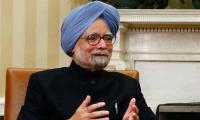India and the US are boosting their defence ties, with the latter willing to share some of its most advanced and critical technologies with New Delhi under the Defence Technology and Trade Initiatives (DTTI). The purpose openly stated behind this is to deepen the strategic ties between the two countries besides countering China and Pakistan.
Meanwhile, the Trump administration has again designated India as a major defence partner, first done by the Obama administration in 2016. US defence secretary James Mattis on his visit to India in September 2017 claimed that the designation of India as a major defence partner reflected the recognition of India as a “pillar of regional stability and security.”
During his visit, as reported by the media, Mattis further said that India and the US have a historic opportunity to set a refreshed partnership adding that underpinned by a strategic convergence based on common goals and objectives that their defence ties had steadily expanded in recent years. “We also discussed ways to further deepen the robust defence trade and technology collaboration between our defence industries,” Mattis reportedly said. The US defence secretary added that the US was looking forward to “sharing some of our most advanced defence technologies” with India. “Cooperation in this area will improve the capabilities of both our militaries and reinforce the foundation for an enduring partnership,” he was quoted as having said.
From 2006-2016, India has bought US weapons systems worth an estimated $15 billion. The Indian Ministry of Defence (MoD) has mapped out that India needs $233 billion to meet its arms and equipment requirements in 11 years. This has been calculated according to the Long Term Integrated Perspective Plan (LTIPP) for 2012-2027. However, the Americans are privately complaining that timeline for various acquisition programs is missing.
Also, they want a framework for the safety of classified information and technology which they fear could be sold in the market. Moreover, there is no mechanism in place for transferring classified information to private Indian industries. US defence firms also don’t want to part with proprietary technology. In addition, the American firms don’t want to be held responsible for defects in products manufactured in collaboration with Indian firms. US investors are also not happy with industrial safety in India. Then there is the major issue of embezzlement through kickbacks involving top military leadership and Indian Ministry of Defence.
It has been reported that the Trump administration wants to sell F-18 and F-16 fighter aircraft to India. These are built by American companies Boeing and Lockheed Martin respectively. But both these companies are mindful of the obstacles in this regard. On the whole, the unabated military purchases show the Indian hegemonic designs in the region and are a source of concern for Pakistan and China besides other countries.
This article reflects on key sporting moments, featuring Pakistan’s triumphs and shortcomings throughout 2024
JUIF’s legal adviser, Senator Kamran Murtaza, is also engaged in consultation process
Sit-in Action Committee decides to call a grand jirga for recovery of Muasawar Kakar
Abbasi says that neither government nor opposition sincerely intended dialogue







